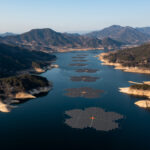Florida is known for being the deadliest state in the country for lightning strikes – and 2014 has been no exception.
Four people in Florida have been fatally struck so far this year, The Tampa Tribune reports.
That’s the same number as in the rest of the entire nation, according to the National Weather Service.
 Summer is the peak season for lightning, and nationwide, 51 people on average are killed each year while hundreds more suffer severe injuries.
Summer is the peak season for lightning, and nationwide, 51 people on average are killed each year while hundreds more suffer severe injuries.
Overall the number of lightning fatalities appears to be on the decline: Across the U.S., there were 23 lightning fatalities last year, a record low.
There were four in all of 2013 in Florida, leading meteorologists to believe this year is an anomaly.
Scientists point to several possible factors contributing to an overall drop in the number of fatalities, including the drought in the Southeast, an area typically ripe for lightning strikes.
“But overall, fewer casualties are the result of awareness,” said John Jensenius, lightning guru for the National Weather Service. “People are more concerned and are taking actions to protect themselves.”
However, he cautioned that the downward trend could quickly reverse itself.
“I would suspect that once the Southeast gets into a more normal yearly rainfall, we will see the lightning strikes go up,” Jensenius said.
Weather Service meteorologists say there are about 1.45 million lightning strikes in Florida each year.
“The reason we get so many thunderstorms in Florida is that the state is a long piece of land with warm water on both sides,” said Joe Dwyer, professor of physics and space sciences with the Florida Institute of Technology in Melbourne. “During the summer, the sun warms the peninsula, and that brings sea breezes. The moist air collides, and that causes updrafts, and that leads to thunderstorms.”
The eight people fatally struck in Florida engaged in a variety of activities when they were hit. One was repairing a roof, two were fishing and another was picking blueberries.
“Fishing is the No. 1 activity that puts people in danger,” Jensenius said. “People who are out fishing on a boat, it takes time to get to safety.”
Was this article valuable?
Here are more articles you may enjoy.

 OpenAI And Microsoft Sued Over Murder-Suicide Blamed on ChatGPT
OpenAI And Microsoft Sued Over Murder-Suicide Blamed on ChatGPT  The 14 Global Trends That Will Shape the Climate in 2026
The 14 Global Trends That Will Shape the Climate in 2026  New Zealand Court Acts to Stop Spread of Hacked Medical Records
New Zealand Court Acts to Stop Spread of Hacked Medical Records  US Auto Sales Poised to Slip as Middle-Class Buyers Retreat
US Auto Sales Poised to Slip as Middle-Class Buyers Retreat 